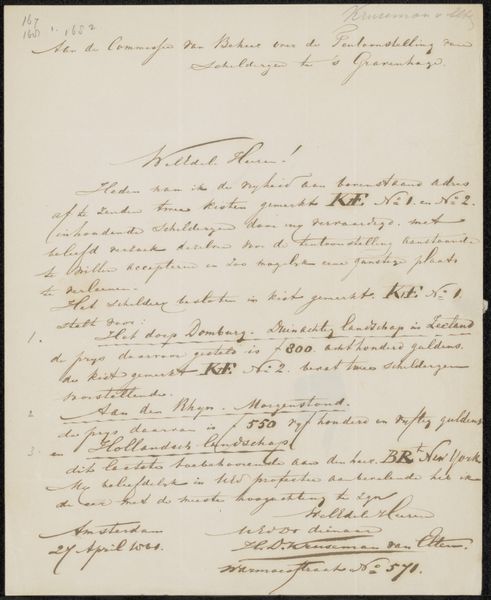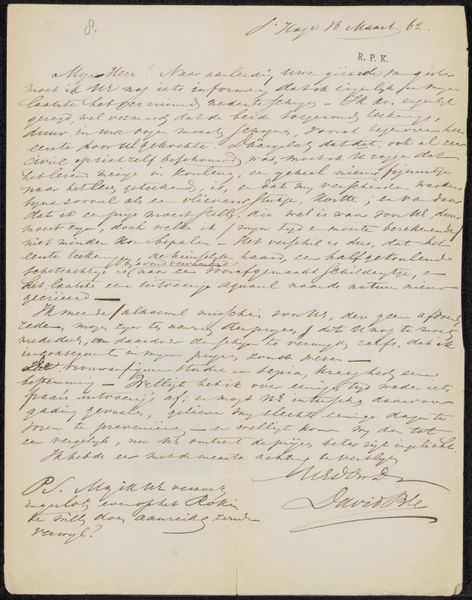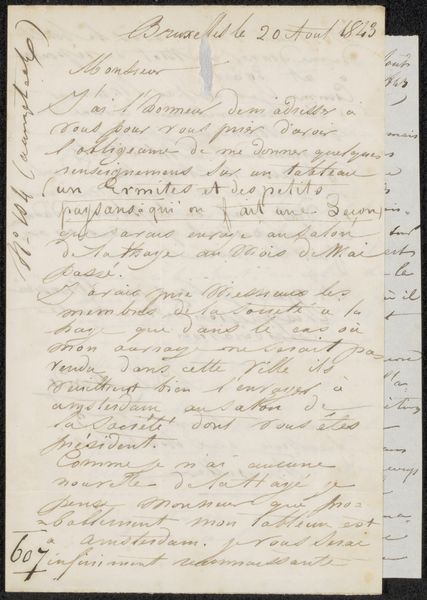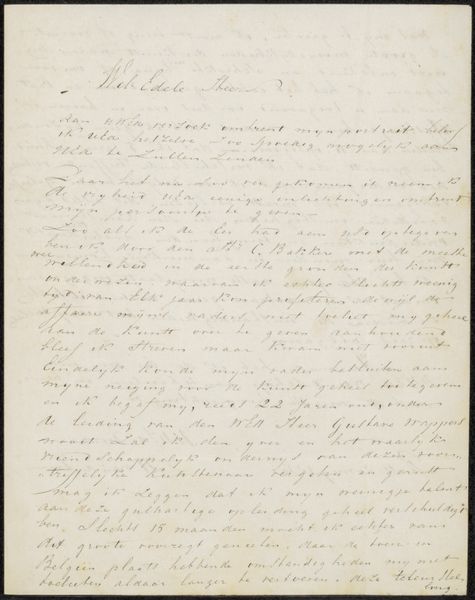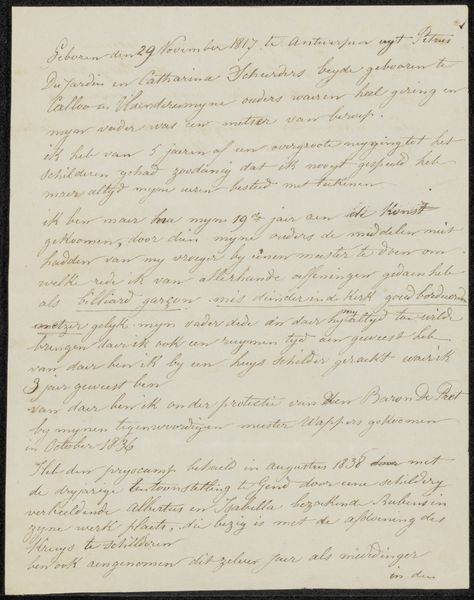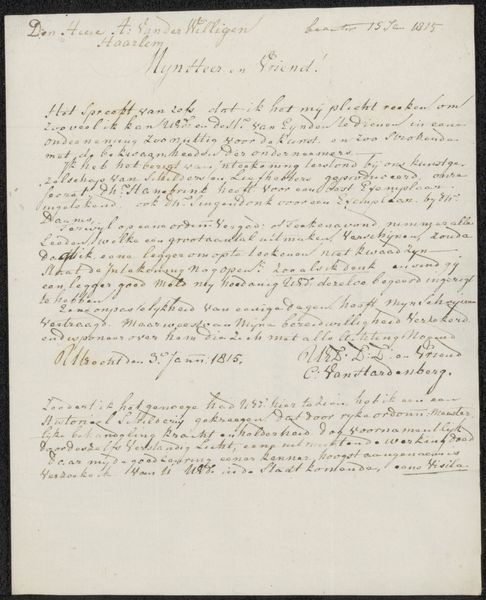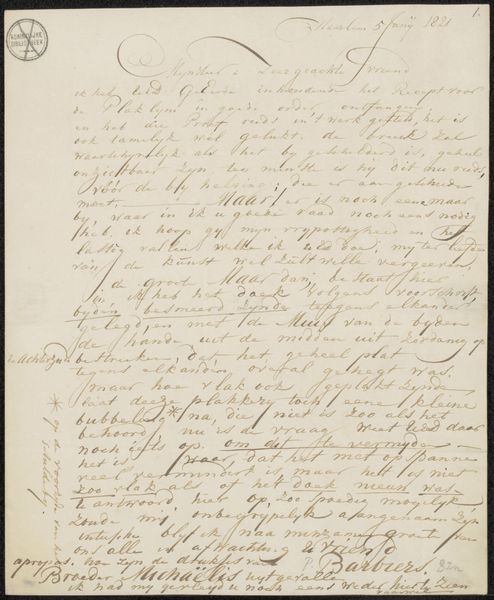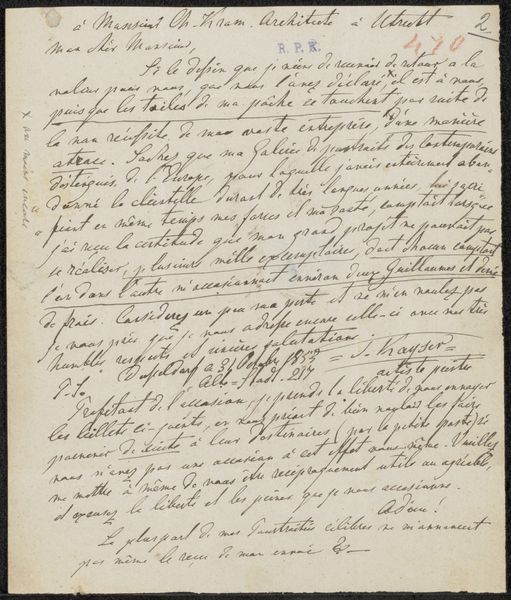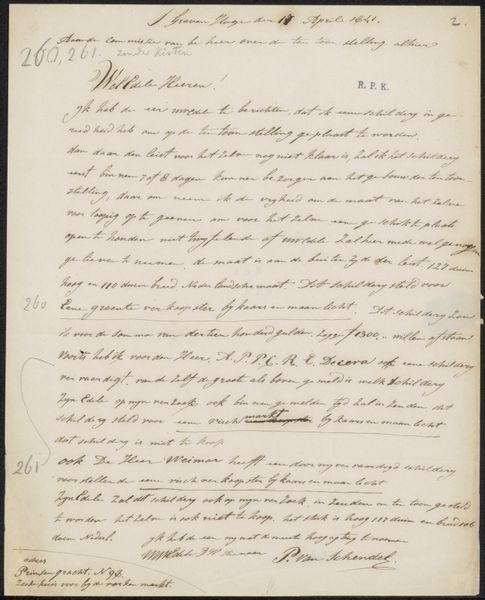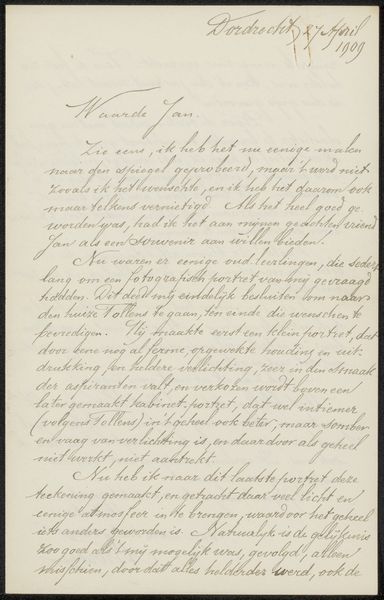
drawing, paper, ink
#
drawing
#
paper
#
ink
Copyright: Rijks Museum: Open Domain
This letter was written in Amsterdam on October 27th, 1856, by Johannes Petrus Waterloo to Christiaan Kramm, and is composed of paper and ink. These were the very stuff of bureaucracy and business at the time. Waterloo deployed handwriting as his means of getting his point across. The formation of each letter, the pressure applied to the nib, the flourishes and corrections—these all contribute to the document’s overall texture and sense of purpose. The act of handwriting itself was crucial for personal communication. It was a skill taught through rigorous exercises and practice. Penmanship connected the hand, eye, and mind in a coordinated dance of inscription. The letter is about Waterloo’s artistry and the prices he asks for his landscape paintings, providing some insight into the art market. The labor involved in producing such an artifact is a testament to the pre-digital age, when written correspondence demanded time, care, and a degree of literacy. The letter serves as a reminder of the tactile and material dimensions of communication before the advent of digital technologies.
Comments
No comments
Be the first to comment and join the conversation on the ultimate creative platform.

